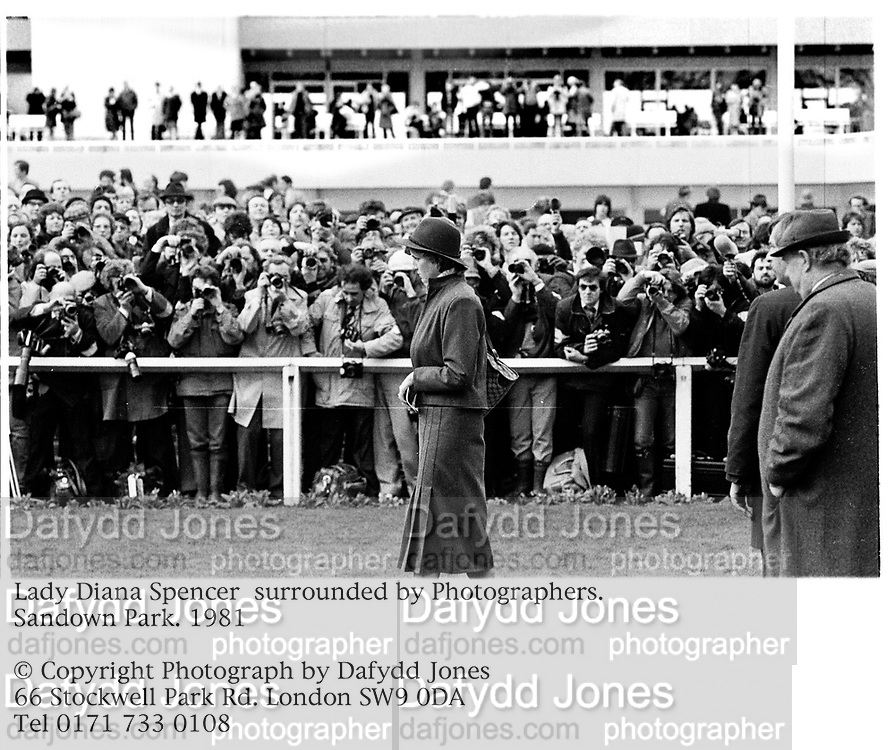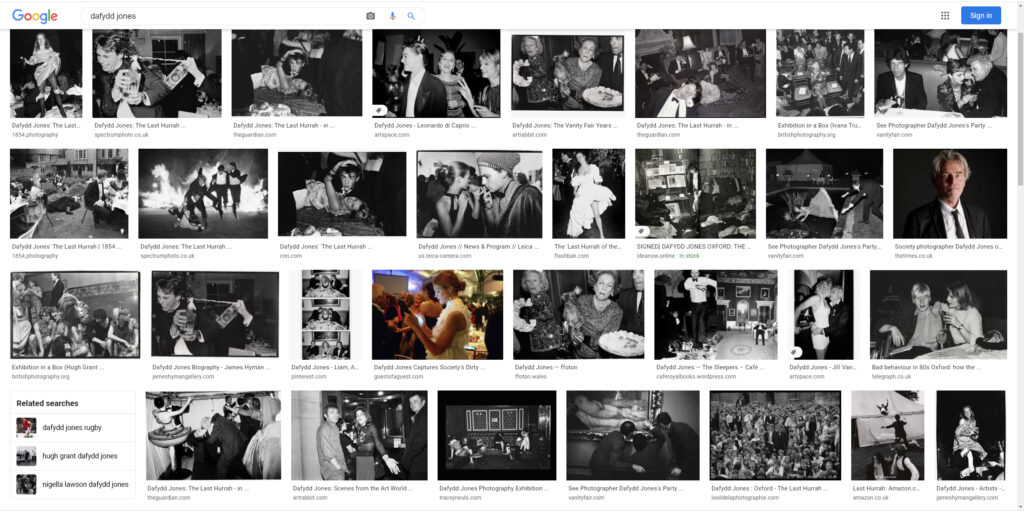Photographer talk at Brighton & Hove Camera Club 10th March 2021
Dafydd Jones’ talk was a walk through his career and some of the images he’d made along the way. These my own notes and reflections from the talk.
Having left art school in about 1977 he wasn’t able to make a living from painting, but had used photographs as source material for his paintings and landed a job at Butlins taking and selling photos to the holiday makers. He found that he liked taking pictures of people and found it was a good experience in learning how to talk to people and put them at ease in front of the camera.
After this he set up a studio in Oxford, but this didn’t go very well. His big break came when he came runner up in a competition entitled “The Return of the Bright Young Things”, where he entered a series of photos taken at the Oxford Dining Club. From this he was offered free lance work for Tatler magazine.

One of his famous images of Lady Diana Spencer (later Princess Diana) was taken from the public enclosures as the magazine couldn’t get a press pass for the event! However, the story was about the press following her so actually he was able to get the perfect shot.
He spent most of that time photographing upper class parties and the magazine printed 10/12 pages of images every month. He said he was always keen to see which adverts had been place next to his images as gave an indication as to the importance they had to the magazine. He found that as time went by, business sponsors moved in on the parties as well.
Jones said that he would walk around the parties looking for things that were happening and never tried to set anything up. People got used to him being their after a while. The magazine always required names for the people in the pictures as well. Whilst taking images for the magazines he would also often take images for himself, which didn’t get sold at the time. Many of the images have been used multiple times over the years by different magazines, especially pictures of young people like Boris Johnson and David Cameron who became well known much later on. He also said that people were more comfortable with the kind of cameras you had to look down into. It was less in their face.
Jones moved to New York and worked on Vanity Fair magazine for a while, followed by some time at the New York Observer when he got bored with party images. Photographing events like the Rodney King Riots and the 1st attack on the twin towers.
He went back to Vanity Fair and photographing Oscar night parties. The new editor was then looking for things happening rather than people just smiling at the camera.
Like to try out new ideas, but they didn’t got down well with the magazines and preferred to work in black and white.
He started to experiment with QuickTime VR movies which were converted into panorama images and made a series of restaurant pictures that were published each week. Jones realised that these images went back to the style he experimented with at art school and he enjoyed this work. However, the magazines always wanted celebrities in the images and wouldn’t take them if they didn’t contain at least one well known person.
After moving back to the UK he has spent Lockdown creating ‘Exhibitions in a Box’ where he has curated and printed images from his archive in limited editions. This has proved successful, mostly being purchased by collectors and organisations.

Reflection
One thing that came across from Dafydd’s talk was that when commissioned to work for a magazine, there was very little license for self expression as an artist and he was expected to produce images to the editor’s brief. However, it was evident that he always had personal work on the go as well. I’m not sure how much I would like that in the same position, that’s probably why I wouldn’t choose that as a career!
Some of the photos were probably not that interesting at the time, but with the passage of time and raised prominence of some of the people being photographed, the images are now more sought after and saleable, so a lesson to never throw images away as you never know when they might be valuable!
In today’s ‘everyone has a camera’ era, where images are shared on social media within seconds, I’m not sure there is much call for this kind of photographer any more, which is a shame perhaps.
Jones has also always retained copyright of his images and not used an agent, consequently he still has control of his images.
Dafydd came across as very unassuming and friendly, I can see why he would have managed to mingle and get these images. It reminds me a bit of the wedding reception work I’ve done, you walk around talking to people, let them relax and get used to you and then you take images when things happen without them taking too much notice.
